Posted in Networks
January 2, 2014

For those who read this blog on a somewhat regular basis, you know that we at IISC find and experience great promise in embracing network approaches to (and as) social change. So what happens when we truly see ourselves as and in networks; that is, appreciating how we are inextricably embodied through and embedded in interconnected flows of energy, material goods, ideas, intentions, etc.?
Ten thoughts, in no particular order, nor meant to be exhaustive: Read More
December 18, 2013

Adam Grant is a professor at the Wharton School of Business whose research focuses on “motivation, prosocial giving and helping behaviors, initiative and proactivity.” His work and writing, including his book Give and Take: A Revolutionary Approach to Success, seem to have something to offer those interested in and engaged in developing networks for social change, as much of it points to data showing that organizations of all kinds benefit from fostering cultures of giving. Read More
December 12, 2013
 Over the past five years or so of supporting self-declared “networks” for change, I have evolved in my understanding of what is new when we call something a network, versus a coalition or collaborative or alliance. On the surface, much can look the same, and one might also say that coalitions, collaboratives and alliances are simply different forms of networks. Yes, and . . . I believe that what can make a big difference is when participants in a network (or an organization, for that matter) embrace new ways of seeing, thinking, and doing. So let me propose that network approaches at their best call on us to lead with some of the following: Read More
Over the past five years or so of supporting self-declared “networks” for change, I have evolved in my understanding of what is new when we call something a network, versus a coalition or collaborative or alliance. On the surface, much can look the same, and one might also say that coalitions, collaboratives and alliances are simply different forms of networks. Yes, and . . . I believe that what can make a big difference is when participants in a network (or an organization, for that matter) embrace new ways of seeing, thinking, and doing. So let me propose that network approaches at their best call on us to lead with some of the following: Read More
December 11, 2013
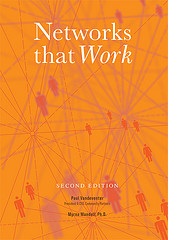
I’ve spent time the past week reading through Networks that Work, a handy and concise resource for developing organizational networks, written by Paul Vandeventer, President and CEO of Community Partners, and Myrna Mandell, Ph.D. The book lays out some very helpful pointers for more formally constructed networks. I have highlighted 10 points below that resonate with our experiences at IISC around supporting organizational networks for social change. My comments and extensions are in italics: Read More
December 4, 2013
“Ultimately if we are to avoid failure in the most critical work of this century, the deepest reaches of our beings must be brought to bear in honestly reevaluating and shifting the most basic structures of our society.”
– john a. powell

The following is a textual recapturing of a Pecha Kucha-like presentation that I gave at an ARNOVA Pre-Conference Session in Hartford, CT two weeks ago. This was part of a 3-hour interactive conversation, co-designed and facilitated with Dr. Angela Frusciante of the William Caspar Graustein Memorial Fund, focusing on the power of networks for learning and social change, primarily with academic researchers and philanthropists.
At the Interaction Institute for Social Change, we are in agreement with Professor john a. powell when he points to the need to consider and make fundamental structural changes in our country and communities for the causes of greater social justice and sustainability. Read More
November 20, 2013
“The major problems of the world are the result of the difference between the way nature works and the way people think.”
— Gregory Bateson

|Photo by amazon2008|http://www.flickr.com/photos/21654792@N03/3745280688/in/photolist-6GXxsY-6HCRqv-6L93Kt-6LFLKG-6MN2EA-6MZAwG-6NmnMj-6R9T78-6UuYYo-6VM6LM-6Wp5Qp-6ZcWpt-6ZHMrr-77FoRY-791JEy-79bwHB-7ax4Yo-7by5uN-7eRtnf-7jDnw3-7ohMBM-7qTm6G-9udNCU-bm9Sb8-asJWuq-fKs8H2-7Ayggf-9FUTKz-a5RCkJ-9rzSZ7-dZBjPo-8Hp3rc-bp5GBv-dwmDwx-djnQfa-dWAW1D-8KBQLy-8UdB66-8GFZ2z-7XBigb-8F2Gu4-7ZAMyi-87fnWU-8hZvM3-86ygbJ-81AMAg-9cYH2z-8eHptW-ei6RfC-hbUHL7-bDixAg|
A couple of weeks ago I had the pleasure of meeting Joel Glanzberg. I had been hearing about Joel and his work from numerous trusted colleagues, including Bill Reed of Regenesis Group and Ginny McGinn of Center for Whole Communities. Joel describes himself as a builder, farmer, teacher, writer, storyteller, naturalist, and permaculturalist. And I would add to that, living systems thinker. Joel has cultivated a practice of seeing and working with patterns of life’s processes, and helps others to do this, for the sake of creating healthier and more whole communities of different kinds.
I was especially interested to hear more from Joel about some of the living systems principles that guide his work, and to think about how these apply to what we at IISC do around network development for social change and focusing on networks as human environments. What appears in quotes and italics below is pulled directly from Joel’s website; the comments in regular text are my own:
Read More
November 7, 2013
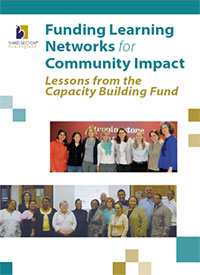
Our friends at Third Sector New England (TSNE) have released an informative report about learning networks. From 2004 to 2012, TSNE and clusters of nonprofit organizations joined in a grant program designed to further social change through building relationships and sharing insights that enabled them to better work together to achieve common goals. The resource, entitled “Funding Learning Networks for Community Impact,” includes interesting explorations of the stages in the development of learning networks and the roles and functions that are key success drivers for nonprofit networks. There are also wonderful and resonant quotes throughout from participants of the Capacity Building Fund (CBF) about the power of and key contributors to effective networks, and I wanted to share a dozen that really jumped out, while strongly suggesting you consult the entire report: Read More
November 6, 2013
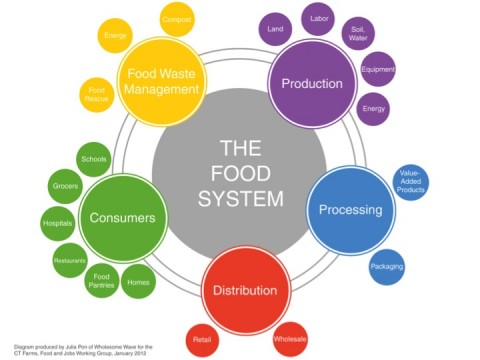
Last Friday, I worked with the Network Support Team (NST) of the Connecticut Food System Alliance (CFSA) to facilitate a gathering of over 100 food system and food security activists. This was the fourth convening in the past year and a half, and featured what have become typical elements of fostering connectivity between people (welcoming and introducing ourselves to new people, learning together, making offers and requests) and alignment around the CFSA vision. And to honor what has been growing in the network as both a call for and a question about the possibility of collective action, NST members Melissa Spear, Marilyn Moore, and Jiff Martin created the following exercise to stimulate people’s thinking about how the network could “change the game” in Connecticut and boldly advance the state towards a reality where “everyone has access to safe, nutritious, culturally appropriate, and affordable food.” Read More
October 31, 2013

As I mentioned in yesterday’s post, this week the Vermont Farm to Plate (F2P) Network held its third annual convening. This marked the move to the third year of the F2P Network’s existence, and another significant milestone.
At the first convening in 2011, there was a mix of enthusiasm, optimism, curiosity, impatience, and some reticence. Many were intrigued by the notion of this new form of multi-organizational collaboration seeking to double local food production in 10 years time, boost the state economy, and address issues of food access and security. Read More
October 30, 2013
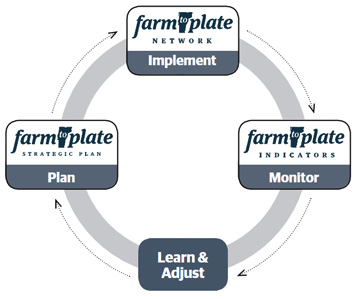
Reporting live from the third annual Vermont Farm to Plate (F2P) Network convening, I am relishing this opportunity to work with and watch a successful network move into its third year of existence. There is much more to share about the F2P journey, which I hope to do in a follow-up post to this one, but for now, I wanted to highlight a couple of themes that continue to resonate throughout the convening and contribute to the growth and success of this network.
Read More
October 24, 2013
“Wealth and income distribution no longer resemble a familiar ‘bell curve’ in which the bulk of the wealth accrue to a large middle class. Instead, the networked economy seems to be producing a ‘power-curve’ distribution, sometimes known as a ‘winner-take-all’ economy.”
– David Bollier, from “The Power Curve Society”

As is no doubt evident from past posts on this blog, we at IISC are enthusiastic about networks and their potential to create more equitable, healthy, thriving and sustainable communities. We do not, however, subscribe to the belief that network approaches in and of themselves guarantee the kinds of just and humanizing opportunities and outcomes we seek. We do encounter people who hold up networks as a sort of panacea, hoping that in an age of more distributed technology and open source approaches to problems and solutions, we will achieve some kind of democratic ideal that has to this point eluded us. That there is promise is evident in many stories that we have heard, witnessed, and shared on this site. That there is reason to be vigilant is also illustrated in the many signs of an ever-growing and highly racialized gap between rich and poor in this country and a continued reluctance on the part of many to look at these glaring inequities or the systems that perpetuate them. Read More
October 17, 2013
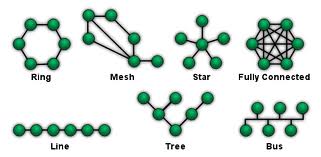
I had a virtual exchange the other day with Jane Wei-Skillern of Stanford University, as we discussed different ideas for going beyond case studies to help engage people in thinking in networked ways. This is what came to mind at the time, and I am eager to hear from others what you have done:
- In the past I have asked people to think about network forms or topologies (hub and spoke, mesh, distributed); assign different forms to pairs/trios and have them think about what examples of that form exist in their lives. What are the strengths of that form? What are its limitations? How might they shift it to be more “effective” in terms of desired impact?
Read More


 Over the past five years or so of supporting self-declared “networks” for change, I have evolved in my understanding of what is new when we call something a network, versus a coalition or collaborative or alliance. On the surface, much can look the same, and one might also say that coalitions, collaboratives and alliances are simply different forms of networks. Yes, and . . . I believe that what can make a big difference is when participants in a network (or an organization, for that matter) embrace new ways of seeing, thinking, and doing. So let me propose that network approaches at their best call on us to lead with some of the following:
Over the past five years or so of supporting self-declared “networks” for change, I have evolved in my understanding of what is new when we call something a network, versus a coalition or collaborative or alliance. On the surface, much can look the same, and one might also say that coalitions, collaboratives and alliances are simply different forms of networks. Yes, and . . . I believe that what can make a big difference is when participants in a network (or an organization, for that matter) embrace new ways of seeing, thinking, and doing. So let me propose that network approaches at their best call on us to lead with some of the following: 







